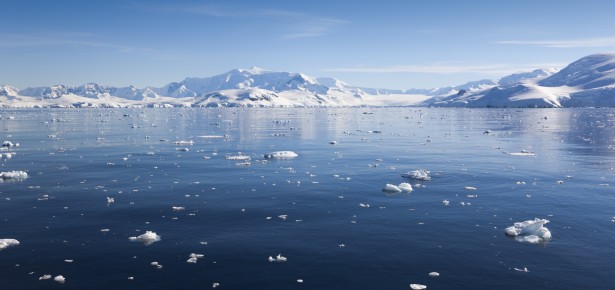
In the Arctic there are major efforts to understand the drivers of the irregular decline in sea ice extent and thickness since the 1980s-90s.
Multiple sensors (satellite and buoys) provide high-resolution data spanning 35 years and sparse historical records, from whaling ships especially, are being used to build a record back to 1850 to characterize previous conditions.
Statistical and physical models are being applied to the seasonal prediction of the annual September ice minimum to understand its high inter-annual variability.
In Antarctica, recent work is exploring the susceptibility of the West Antarctic ice sheet to a ‘rapid’ decrease in mass through incursion of warm ocean water beneath the major fringing ice shelves. Projections indicate a potential rise of global sea level of 2 m by 2100 and 6 m by 2500 as a result of Antarctic ice loss..
The Arctic is experiencing global warming rates at two to three times above the global average. This “polar amplification” is due mainly to ice-albedo feedbacks; ice and snow melt exposes dark ocean and bare land that absorbs increased amounts of solar radiation that further raise temperatures thereby melting more ice and so on. Arctic sea ice has been rapidly shrinking and thinning since the 1980s-90s. Permafrost is thawing near the surface, leading to ground subsidence and lake formation. Arctic glaciers and ice caps are losing mass.
In Antarctica, polar warming is limited mainly to the Antarctic Peninsula and West Antarctica (Amundsen-Bellingshausen seas)/ice shelves along the Peninsula are disintegrating. Sea ice, in contrast, has slightly expanded but there is large regional variation.
Read more on this topic:
from Professor David Walton in part 1 of the series
and from Professor Grant Bigg in part 3 of the series.
Latest Comments
Have your say!